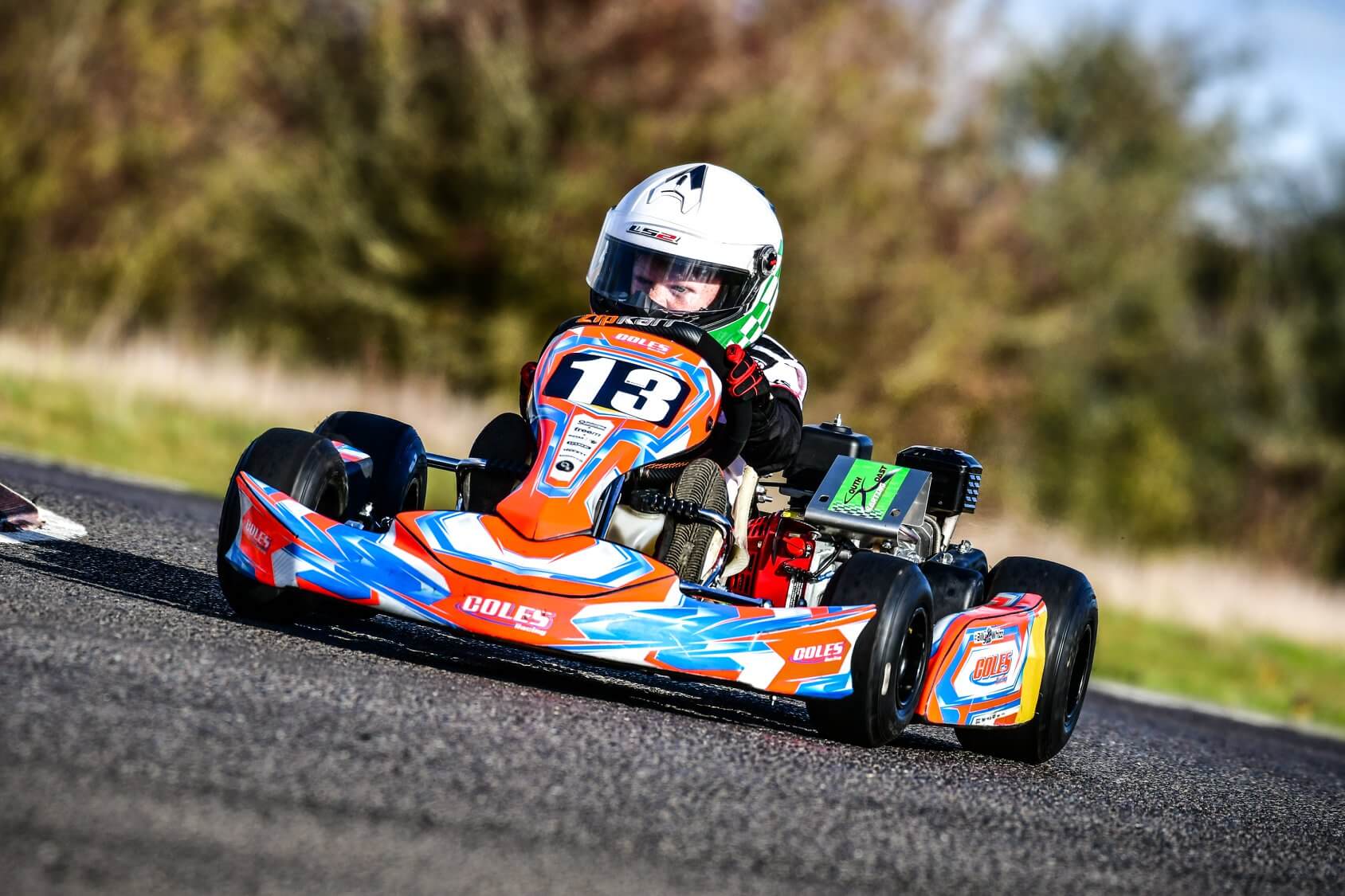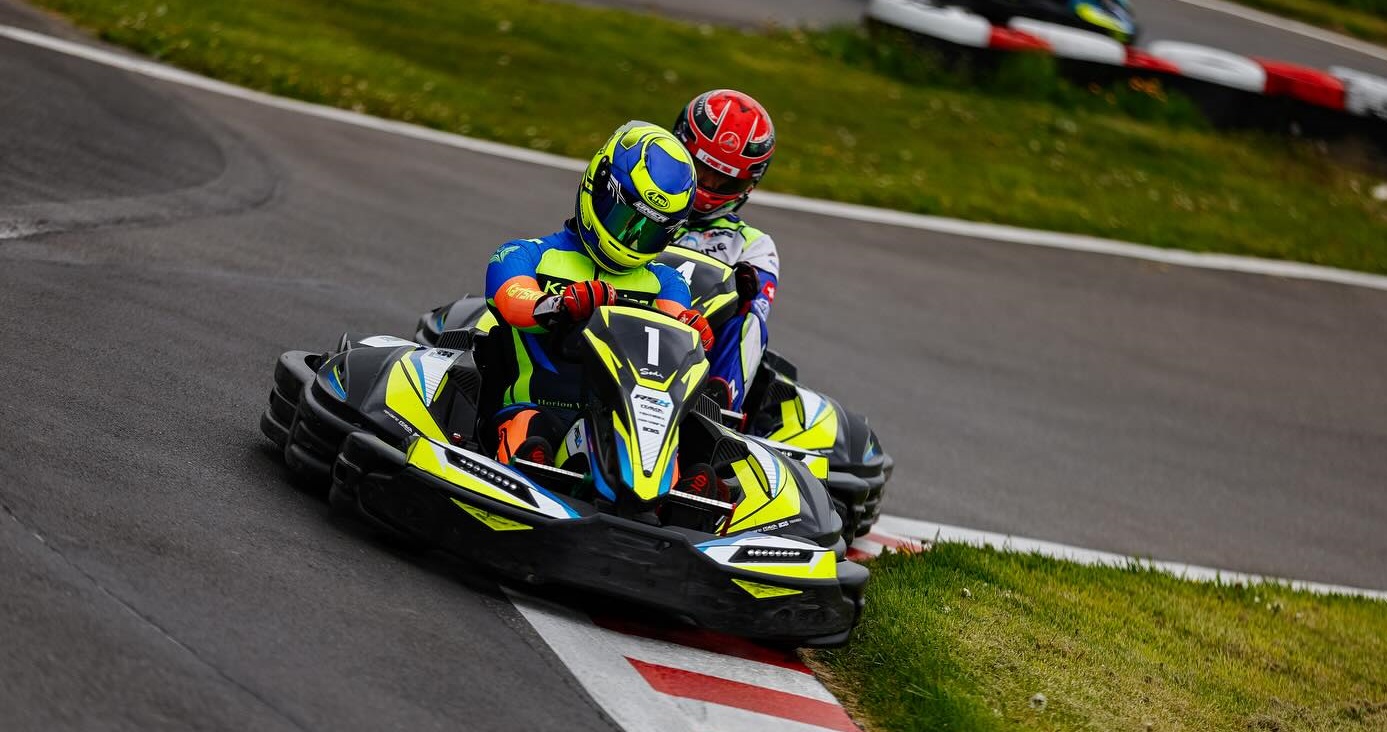What Age Can You Start Karting? (Leisure and Competition)
By RobinB on 12 August 2025 KartingThe age at which you can start karting depends on the type of practice you are considering: rental karting (occasional leisure on rental karts) or competitive karting (sporting practice supervised by a federation). From a very young age, there are suitable options to introduce children safely 🙂
In France, karting is available for leisure from the age of 3, and the first competitive categories start between 6 and 8 years old depending on the framework (federal FFSA or associative UFOLEP).
Rental karting: from what age can you start for fun?
In leisure karting (rental), it is possible to drive at a very young age thanks to karts specially designed for children. Most circuits offer several types of karts depending on the driver’s age and height.
From around 3 years old, children can get started on very safe electric mini-karts; from 7 years old (and ~1.25 m minimum), they can drive junior karts with combustion engines; and finally, around 12 years old (or earlier depending on height, often ~1.50 m), access to more powerful adult karts becomes possible.
An intermediate option exists from the age of 4 to discover karting as a passenger: the two-seater kart, driven by an adult, with the child as a passenger 👨👧
From 3 years old: first steps in karting (electric karts for children or “Babykart”)
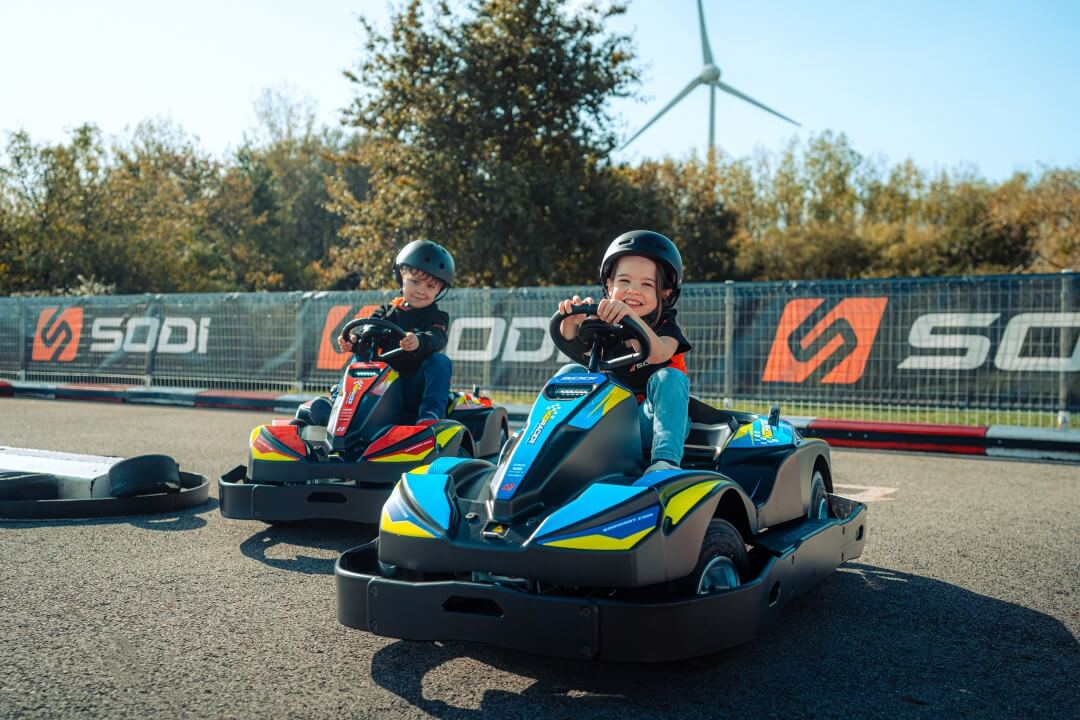
For the very young, some circuits offer electric mini-karts suitable from 3 or 4 years old. These machines run at a very low speed and offer maximum protection. For example, the Sodi KidRacer model is an electric kart designed for ages 3–6, with reassuring linear acceleration, a seat belt, and automatic braking as soon as the child releases the accelerator 😌
Thanks to this type of kart, even a child who doesn’t know how to ride a bike can hold a steering wheel and learn the basics in complete safety, on dedicated tracks under close supervision. One of the parents can also sit behind the child to secure them if needed 🦺
A very common alternative at that age is the two-seater kart: the child (from about 4 years old) sits in a passenger seat next to an experienced adult who drives the kart. This format allows the youngest to experience their first sensations of speed safely, without having to control the vehicle themselves (see photo below).
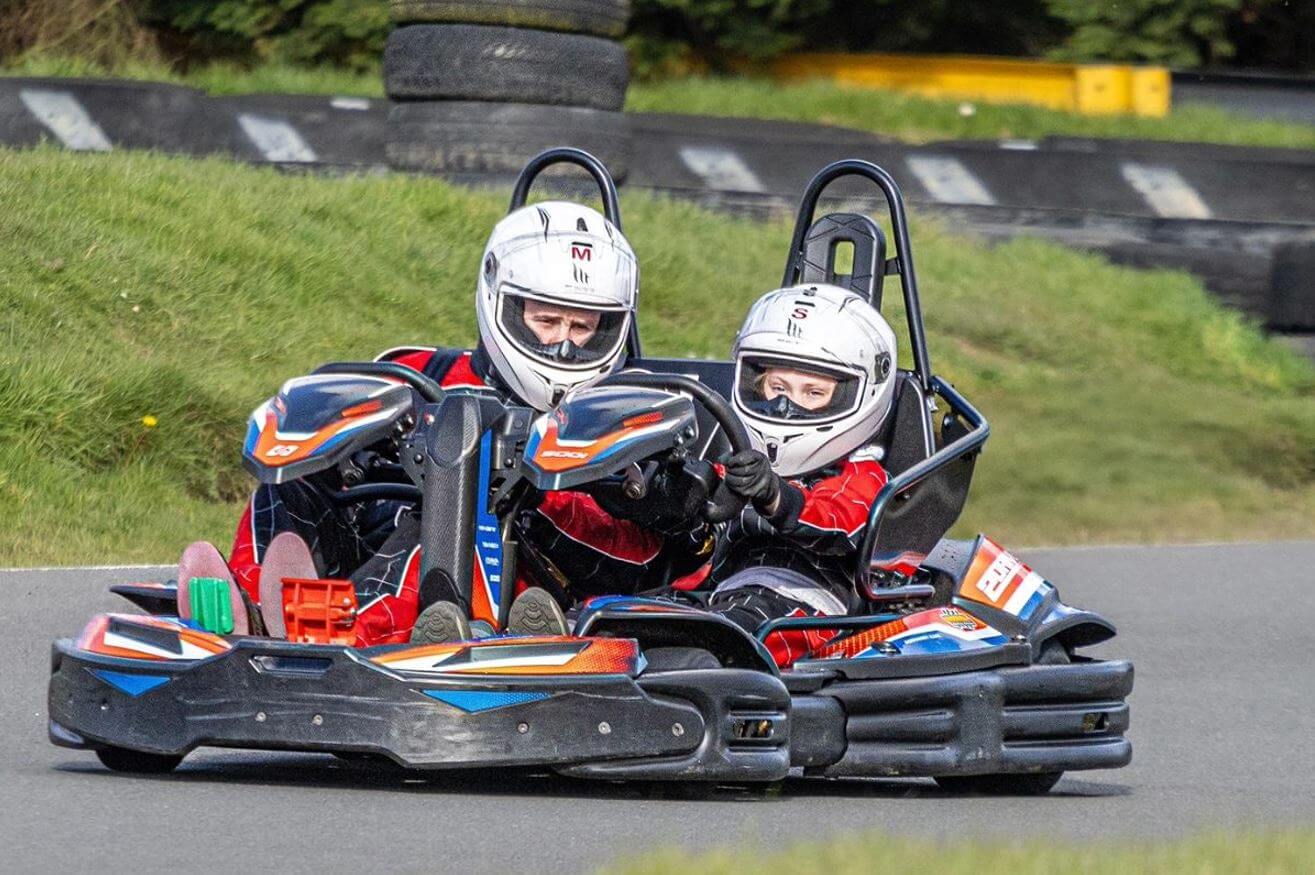
The little co-driver sometimes has a dummy steering wheel to “pretend”, while the adult manages the actual driving. Many parents say that this shared two-seater experience, even at low speed, gives children the spark and prepares them to drive solo later on 💪
From 7 years old: kids’ karts (thermal leisure karting)
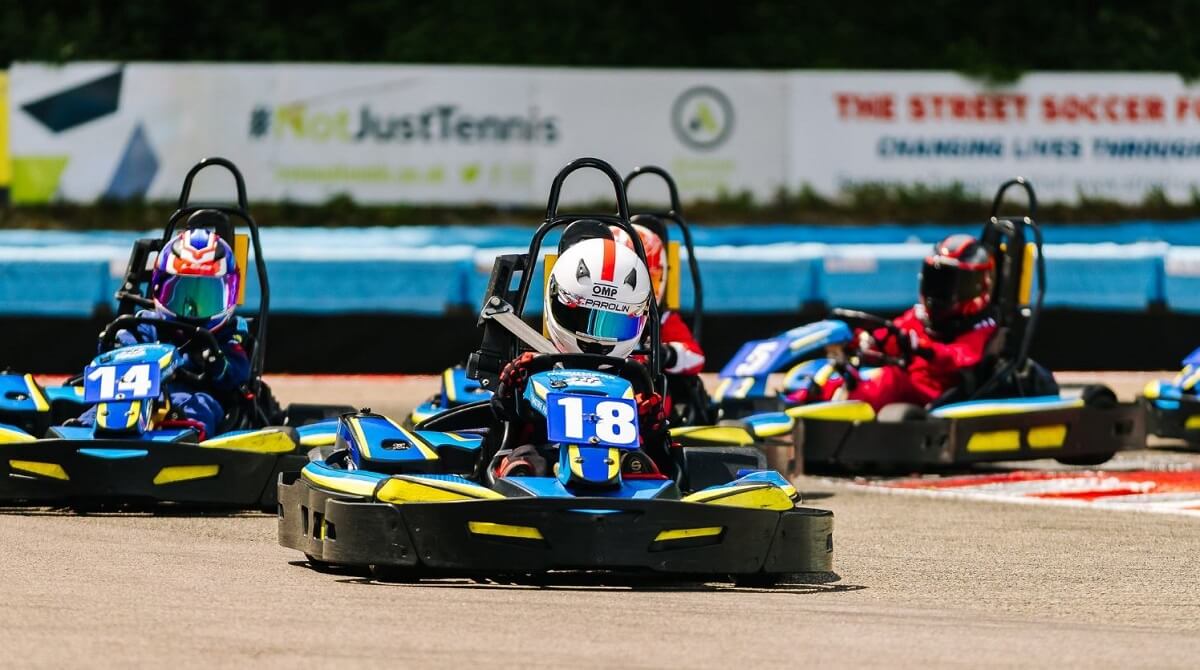
After the age of 6, young drivers can move on to combustion engine karts (petrol engine). In general, 7 years old is the minimum required age on most rental tracks to drive a kid’s kart solo, provided they measure around 1.25 m to reach the pedals properly and have a good view of the track 👍
These junior rental karts are equipped with 4-stroke engines of around 120 to 200 cc, typically producing 4 to 5 horsepower, which limits the top speed to about 40 to 50 km/h. This is enough to provide great sensations while maintaining a high level of safety.
Before each session, a briefing is given, and specific supervision monitors the track for this age group. Indoor circuits are well suited for children thanks to short and safe layouts, while larger outdoor tracks will be accessible as they grow.
ℹ️ In all cases, the child must always wear a properly sized approved helmet and closed-toe shoes. A neck brace is highly recommended, and even mandatory in competition for young drivers, just like the rib protector.
The goal in leisure karting is above all to have fun safely, without any time trial concept: therefore, no risky overtaking between adults and children — often, they drive in groups of the same age or during specific family sessions 😉
Access to 270 cc adult karts (from 12–14 years old)
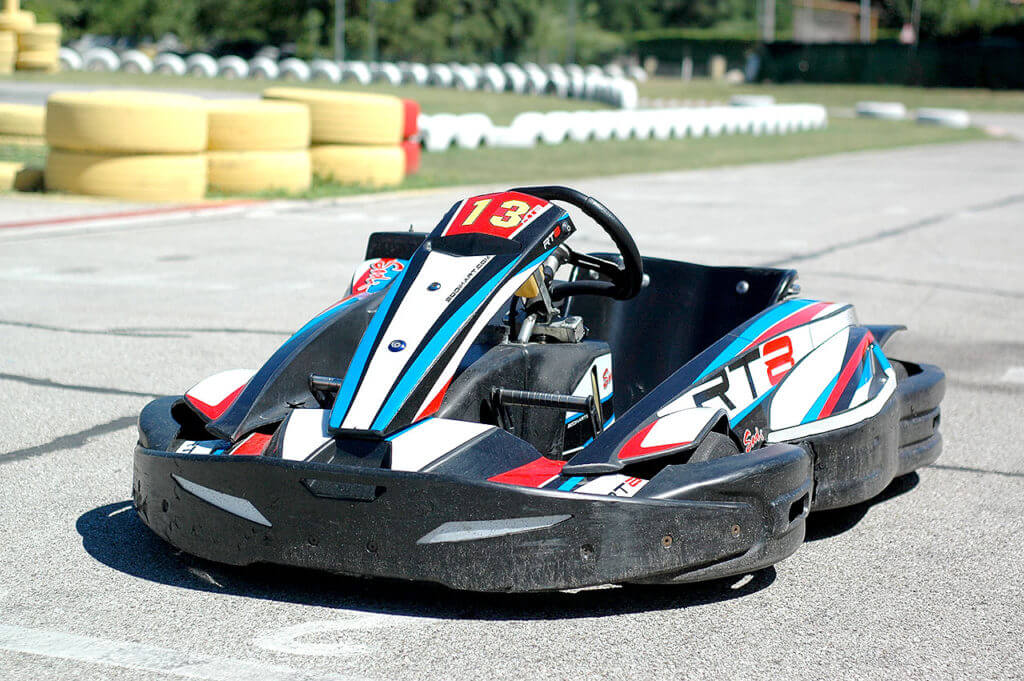
After a few years of practice on junior karts, young drivers may aim to switch to more powerful adult rental karts. In France, the usual minimum age for standard rental karts (270 cc engine ~9 hp) is 12 to 13 years old, with a recommended height of around 1.50 m. These karts can already reach speeds of about 70–75 km/h 😋
Depending on the venue, the exact age may vary: some tracks allow from 11 years old on slightly restricted adult karts, while others require 14 or even 15 years old. In any case, a gradual progression is important: it is advisable for a child to have a solid background in junior karting before moving on to a more powerful kart. Track operators often conduct a small test or several introductory sessions to ensure the young driver masters the basics (braking, racing lines, flags) before allowing them to run freely in sessions with adults.
Switching to an adult kart is a significant milestone: driving becomes more physically demanding (heavier unassisted steering, stronger braking) and more technically challenging (longer outdoor tracks, managing overtakes among experienced drivers). At this stage, some teenagers choose to remain in pure leisure, while others, bitten by the speed bug, may consider moving towards amateur or official competition to keep improving.
ℹ️ Remember to check: each track sets its own conditions regarding age, minimum height, and regulations (helmet, specific equipment, etc.), so do not hesitate to contact the track directly of your choice to confirm access criteria before booking.
First steps in leisure competition: the SWS Junior Cup
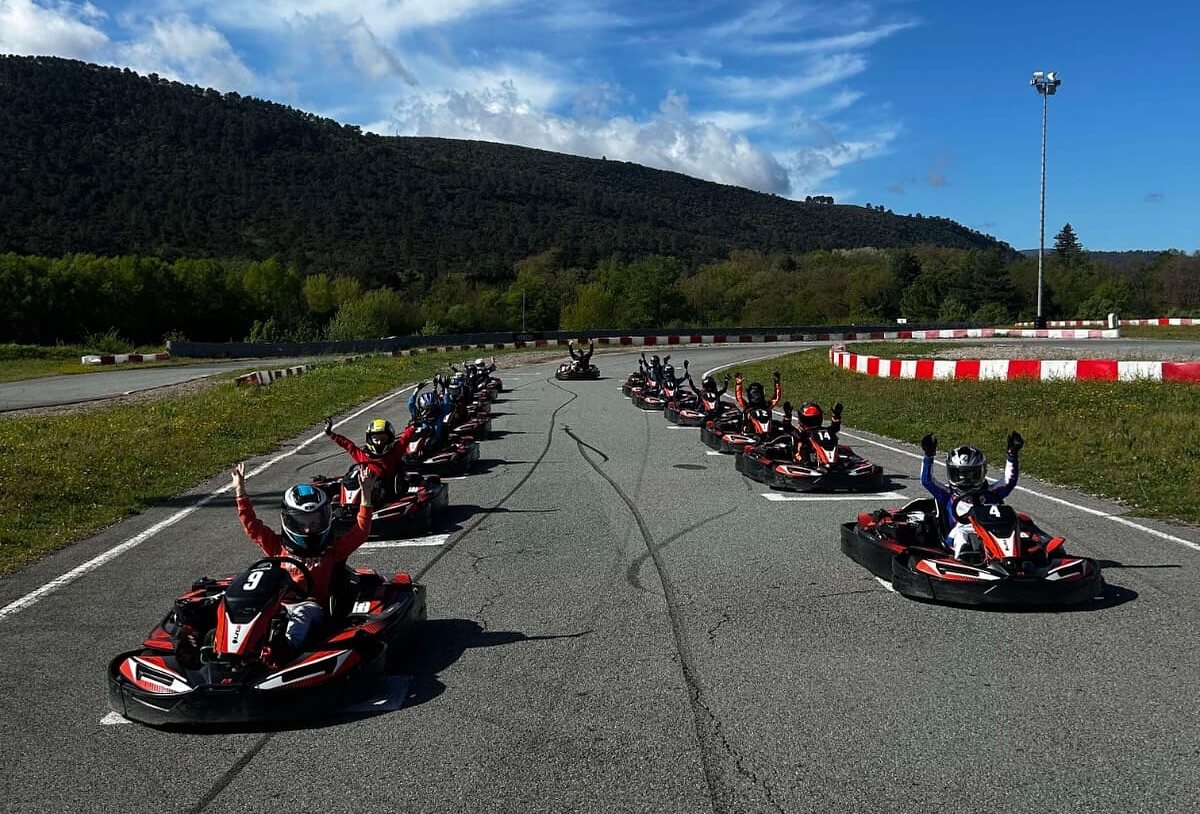
And for young enthusiasts who want to discover competition starting from leisure karting, the Sodi World Series (SWS) provide an excellent stepping stone. The Junior Cup category, open to ages 7 to 14, allows participation in rental kart races organised at numerous partner circuits across France and around the world 🌍
See also: "Sodi World Series (SWS): The global competition dedicated to leisure karting"
No racing licence is required, only a free registration on the official SWS website. These competitions are held on karts specially adapted for young drivers (such as Sodi LR5 or LR6), similar to the junior karts usually used in leisure sessions. Races typically last around 10 to 15 minutes and provide a first highly educational competition experience, all in a friendly and safe environment 👍
The best drivers can even qualify for a major annual world final bringing together participants from all over the globe, offering a unique sporting adventure from an early age 🔥
The French Karting Schools (EFK)
For children who show an interest in karting from an early age, the FFSA (Fédération Française du Sport Automobile) has set up the Écoles Françaises de Karting. Present in more than 40 facilities throughout France, these schools welcome young drivers from the age of 6 to teach them the basics of driving and safety rules, in a fun and educational environment 🙂
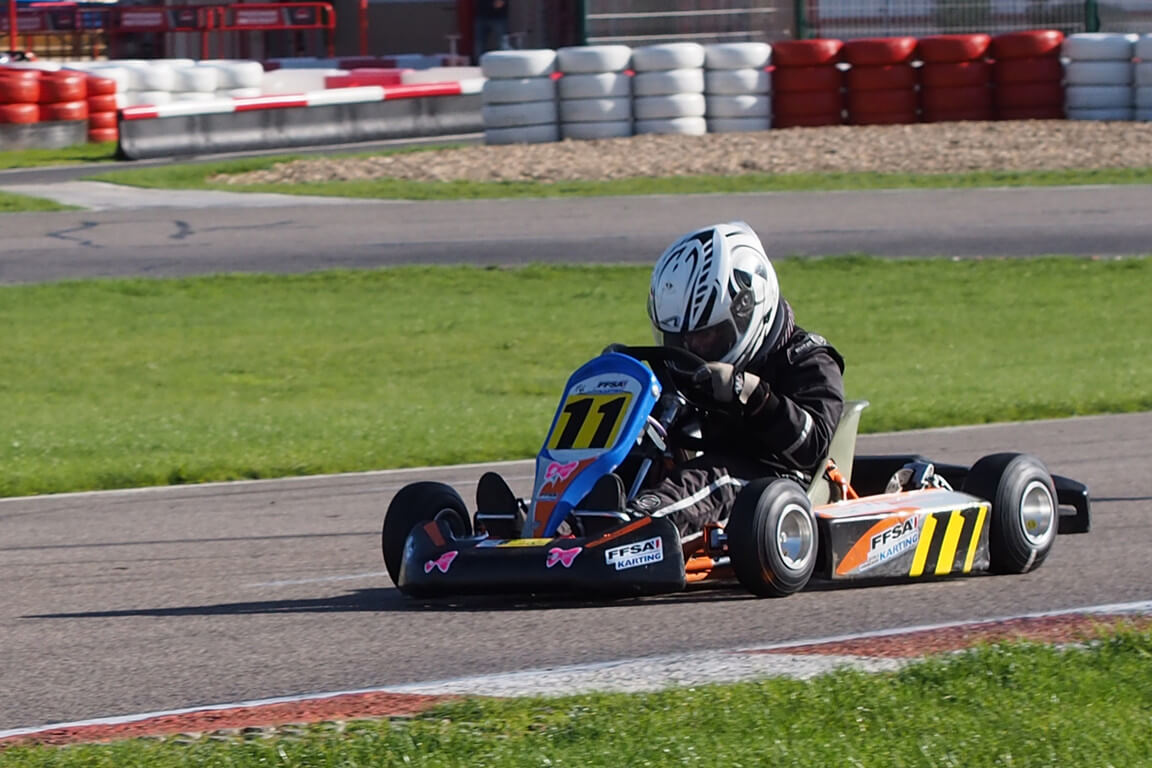
Supervised by state-certified instructors (BPJEPS Motorsport or DEJEPS with a karting specialty), children progressively learn kart handling, the ideal racing line, braking techniques, track safety rules (flag meanings, incident management…), as well as simple mechanical basics (checking tyre pressure, basic kart adjustments) to better understand their vehicle.
See also: "How to become a driving instructor ?"
The training generally takes place as regular classes (on Wednesdays or Saturdays) within a club or a local ASK. Students benefit from personalised follow-up through the "Pilot’s Logbook", an essential document allowing both the child and the instructor to track progress after each session. This logbook also helps review the theoretical concepts covered and prepare for higher levels 📈
Student progression is structured in different stages marked by internal diplomas called “Volants”: Bronze, Silver, then Gold. To obtain each Volant, the young driver must complete a series of practical exercises, answer quizzes on safety and regulations, and from the Silver Volant onwards, perform timed laps to measure performance ⏱️
ℹ️ The Bronze Volant is particularly important as it is mandatory for children aged 6 to 7 who wish to obtain their first FFSA competition licence in the Minikart category. This measure ensures that every young driver has the necessary skills and maturity before joining an official starting grid.
From a budget perspective, the EFK offer a reasonable alternative compared to full competition. A participation title from the FFSA called “TPANEFK - ANNUAL NATIONAL FRENCH KARTING SCHOOL” costs about €40 per year, to which registration fees varying by school are added. Expect to pay around €70 for a one-off discovery session, but full annual packages can range from a few hundred euros to about €1,600 per year, depending on the chosen facility.
These rates generally include the use of school karts, fuel, professional supervision, and often the loan of the necessary equipment (helmet, neck brace, race suit).
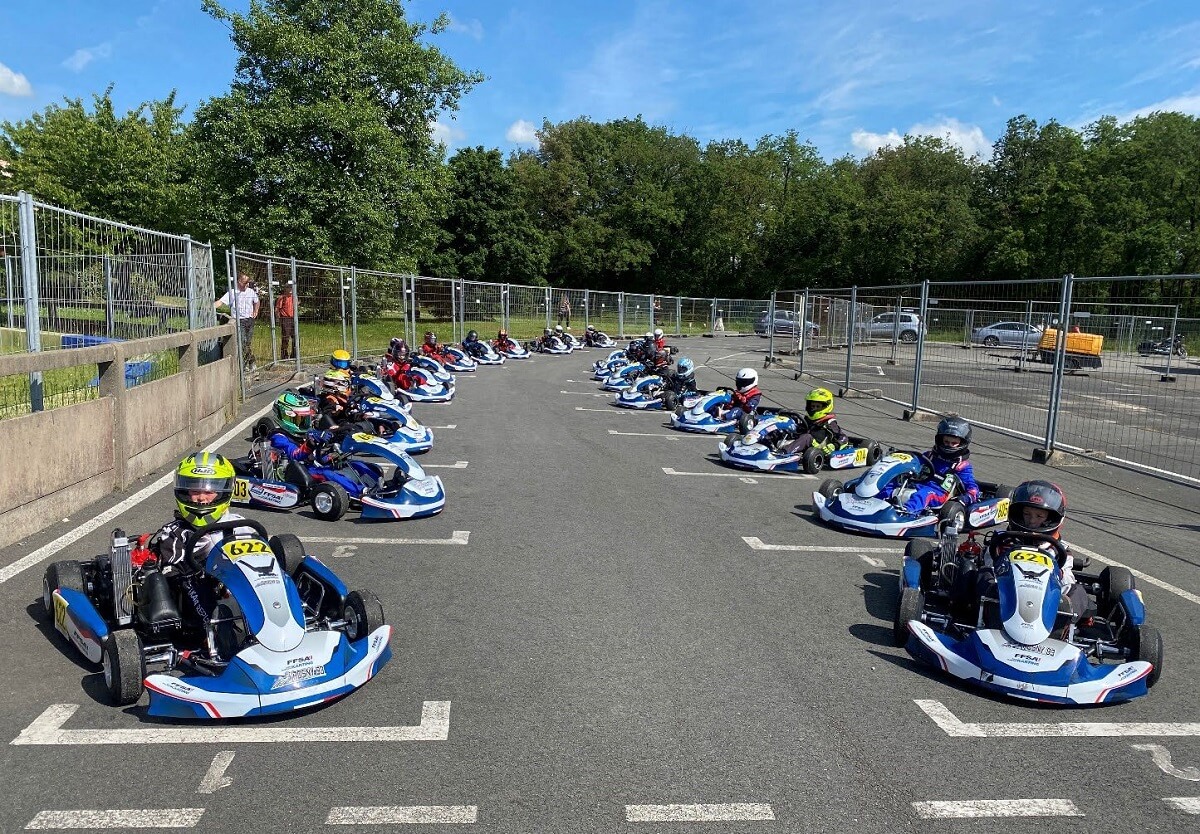
A few criticisms can nevertheless be made about the EFK network. Some parents notably regret significant differences from one school to another in terms of fees or the teaching quality of the courses offered. For instance, practical exercises such as slalom or emergency braking are not always systematically provided by all schools. Similarly, the theory taught sometimes boils down to a simple written summary in the Pilot’s Logbook, without any real additional teaching materials.
Given these remarks, it is therefore recommended that parents visit several schools, compare the educational offers, check the variety of exercises offered as well as the instructor/student ratio before making a final commitment.
However, despite these few points to watch, the overall assessment of the French Karting Schools remains very positive: they ensure safe and structured learning, while serving as an excellent stepping stone towards official competition for young karting enthusiasts 👍
ℹ️ To register your child, simply contact the nearest EFK directly, fill out the membership form, and pay the corresponding fees as well as the TPANEFK. You can easily find the nearest school via the complete list available on the official EFK website.
Starting in competition: FFSA or UFOLEP?
When you want to go beyond leisure and take part in real races, there are two main frameworks in France: competitions under the aegis of the FFSA (official federation, which organises the federal championships) and those of the UFOLEP (affinity-based federation, focused on accessible leisure sport). Both approaches allow you to start at a very young age, but with slightly different categories and philosophies 🤏
FFSA competition categories for young drivers
The Fédération Française du Sport Automobile (FFSA) offers a structured framework adapted to different age groups for practising competitive karting. For the youngest, official categories start from the age of 8, although from as early as 6 years old, it is possible to discover the first sensations during local club races thanks to the Minikart (also called competition Babykart). These very educational races are primarily designed to gently prepare children for federal competition 😎
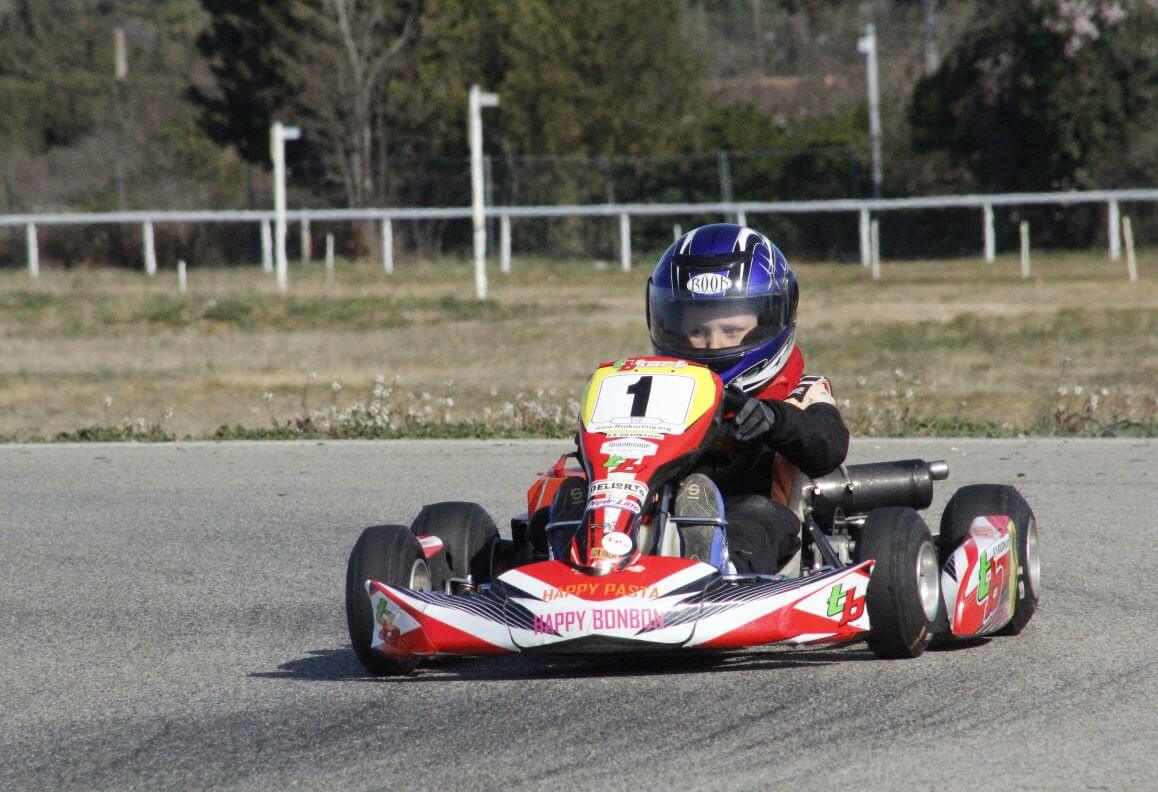
The first real official FFSA category is the Mini 60, open to young drivers aged 8 to 12. The karts in this category have a 2-stroke 60 cc engine, such as the Vortex Mini FR, producing about 8.5 horsepower. These karts, with a minimum weight including driver set at 110 kg, are specially designed to avoid an expensive arms race. As such, engines are often allocated by random draw during major national events, ensuring sporting fairness and allowing cost control ⚖️
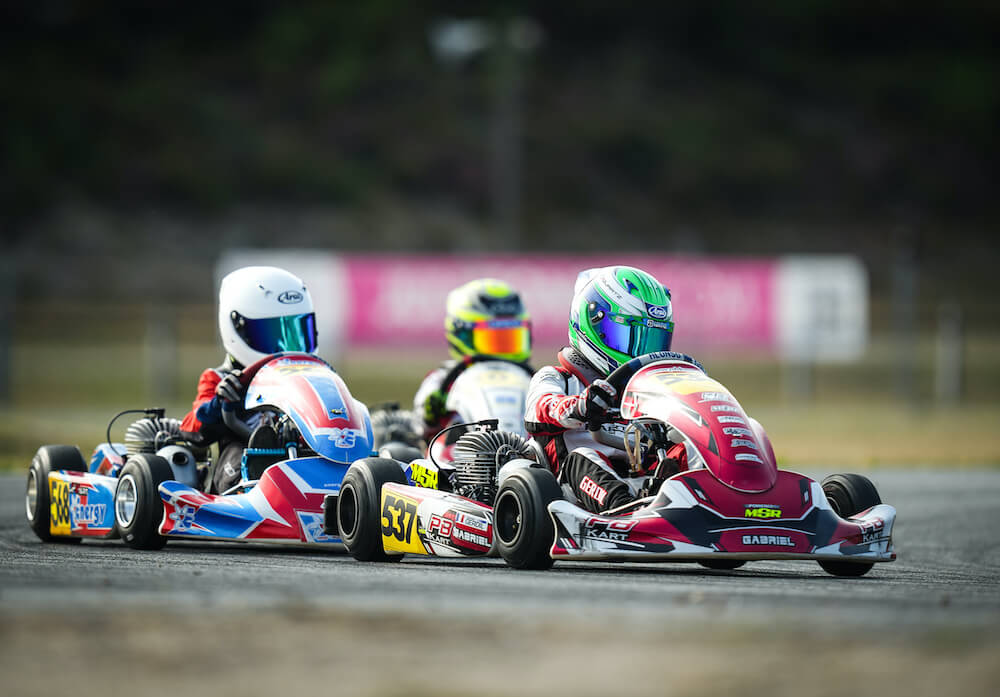
After the Mini 60 category, young drivers can progress to the Nationale category, reserved for drivers aged 12 to 17. This popular category uses a ROTAX 125cc Junior Max Evo engine, producing 23 horsepower, and is renowned for its reliability. The minimum weight required in this category is 145 kg including driver. It is a key step before aiming for the top level.
For those who wish to commit to the path towards the highest level from their teenage years, the FFSA offers the Junior category (OK-Junior), generally for ages 12 to 15 in the French Junior Championship. This category uses top-tier equipment: Exprit chassis and Vortex OK-Junior liquid-cooled engine, identical to those used in the FIA Karting Academy Trophy. With a minimum weight of 140 kg including driver, this single-make category is an ideal stepping stone towards international competitions 🏆
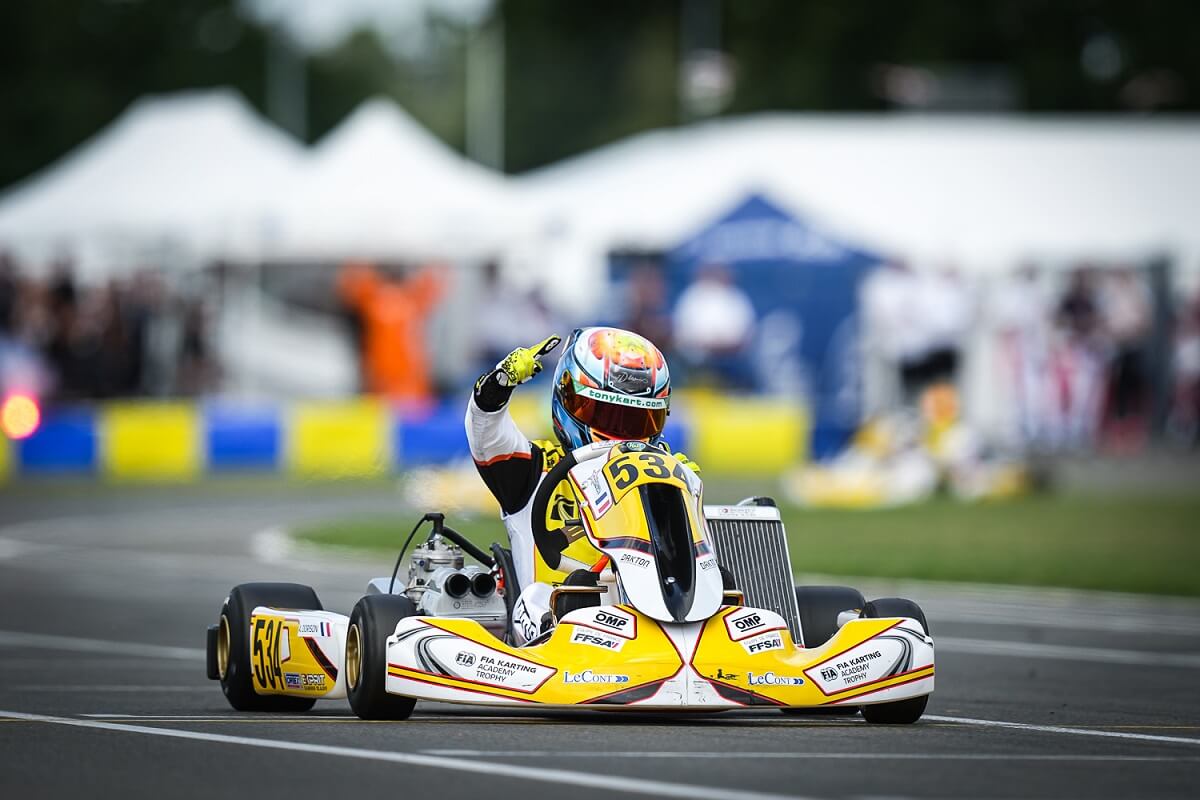
From around 14 or 15 years old, young drivers can access the adult categories, notably the Senior category (with 125 cc engines such as the IAME X30 or Rotax Max), as well as the highly performing gearbox categories. These categories allow young drivers to continue competing at a high level in very competitive regional, national, and international championships.
In summary, the FFSA offers a clear and progressive competition pathway, enabling young drivers to evolve according to their ambitions, resources, and skill level, from a simple beginner kart to high-level international competition.
In addition to these “federal” categories managed by the FFSA, there are many single-make cups organised by manufacturers or importers, which complement the offering and are often more financially accessible 😋
For example, the KFS Cup (Kart Formula Sport) offers simplified karts from the age of 12, with a moderately powered 125 cc Vortex engine, ideal for a modest budget. The IAME X30 championships (Junior, Senior, Master…) are very popular: they use the IAME X30 125 cc engine with different age categories from 12 years old. Similarly, the Rotax Max is available in Junior, Max, Master, etc., and is a favourite among enthusiasts as the Rotax 125 Max engine is known for its robustness and Rotax competitions offer a friendly atmosphere. Finally, there are original formulas such as the IAME KA100 (100 cc engine without valve, ~22 hp, available from 12 years old) or the Rotax DD2 (2-speed kart from 15 years old).
Each category has its technical specificities, but the important thing is that there is a competition pathway suited to every age group from 6 years old, ranging from leisure level to the French Championship 👌
What budget should you expect to start in FFSA competition?
Getting into competitive karting represents a significant investment. The cost of a complete new kart for young drivers varies depending on the category: expect around €3,000 for an older-generation Minime kart equipped with a 60 cc 2-stroke engine, now limited to leisure use as it has been replaced in official competition by the Mini 60. For a recent Mini 60 kart, compliant with current standards and ready to race in competition, you should rather budget between €5,500 and €6,000.
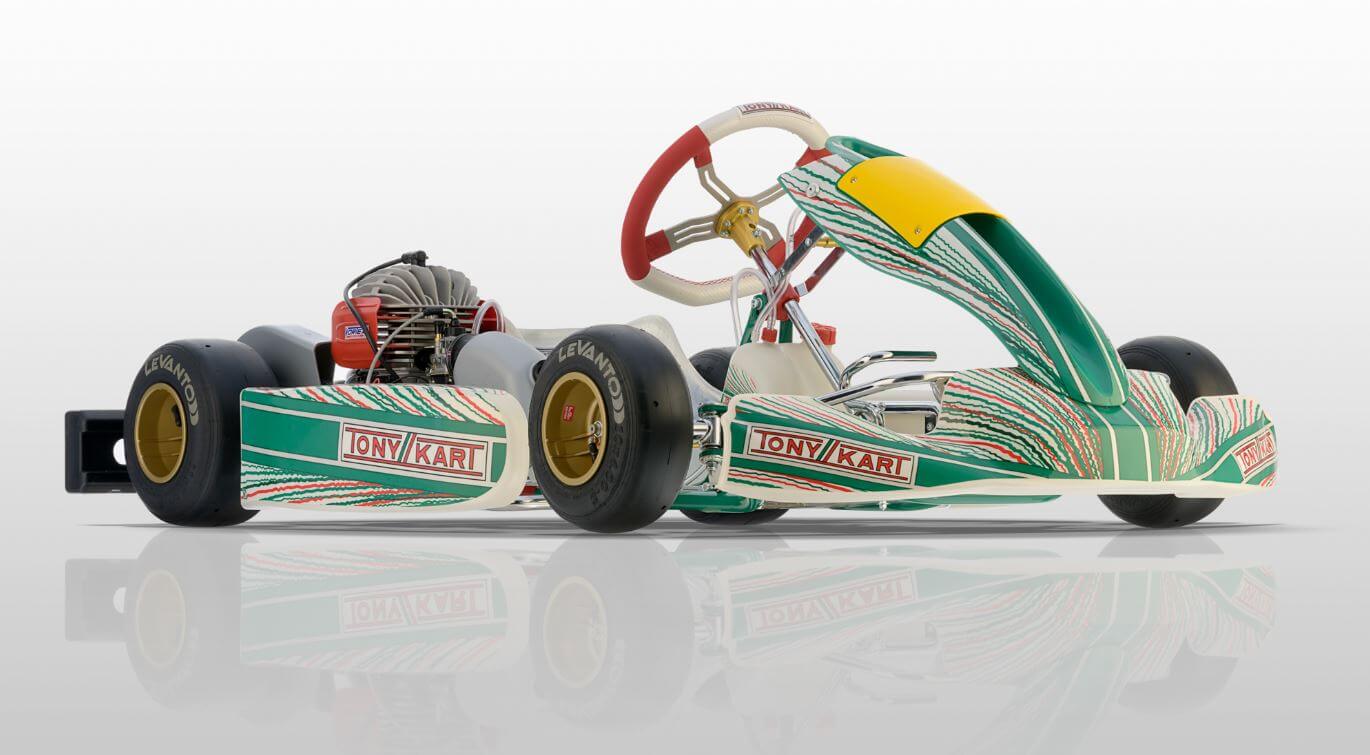
Moving up another level to the Junior or Senior (125 cc) categories, the price of a new kart quickly rises to around €7,000 to €8,000. To this must be added numerous essential additional expenses: full driver equipment (helmet, race suit, gloves, rib protector…), spare parts, consumables such as tyres and fuel, and of course costs related to track time and travel 💸
➡️ See all kart listings on GoToTheGrid 😋
For leisure, if you regularly drive your own kart (about twice a month), the annual costs for consumables and maintenance will be between €2,000 and €3,000. However, as soon as you move towards official competitive practice, expenses rise quickly: you need to factor in race entry fees, the regular use of new tyres, frequent engine servicing, as well as logistics costs for transporting the equipment and staying at circuits across France. Even in so-called “promotion” categories, a full season in the French Championship can easily amount to several thousand euros.
See also: "What is the budget required to drive a competitive kart ?"
ℹ️ For example, for a full “turnkey” season in the French Junior Championship organised by the FFSA Academy, expect around €19,150 excl. tax. And this amount does not include your travel expenses to the circuits or any additional training days.
Some parents, keen to give their children the best possible conditions, may even invest over €20,000 per year from the Mini 60 category onwards, in order to aim for the top spots nationally 💪
However, rest assured, it is entirely possible to start at a lower cost by taking part in club races or regional league events. Choosing second-hand equipment, getting help from friends or family for mechanics and logistics, and carefully selecting the events to enter helps to keep the budget under control while giving your child the opportunity to discover competition in good conditions 😉
UFOLEP competition karting: a more affordable alternative
Alongside the FFSA pathway, the UFOLEP (Union Française des Œuvres Laïques d’Éducation Physique) offers competition karting with a more leisure and educational focus, in a very friendly spirit. UFOLEP allows children to race from age 6 as well, in technically simpler and more economical categories. Indeed, UFOLEP categories use industrial 4-stroke engines that are robust and inexpensive. Here are the main classes and their characteristics:
- MINI 4T UFOLEP category: for ages 6–9, kart equipped with a Subaru 120 cc 4-stroke engine (~5 to 6 hp). Reduced speed and minimal maintenance. A new kart in this category costs about €3,500 and the annual licence ~€55.
- JEUNE 4T UFOLEP category: for ages 9–13, Subaru 211 cc engine (~9 hp). Slightly larger kart. Price of a new kart ~€4,490, licence ~€65.
- SPORT 4T UFOLEP category: from 13 years and adults, Subaru 4-stroke 402 cc engine (~14 hp). New kart ~€4,990, annual licence ~€85.
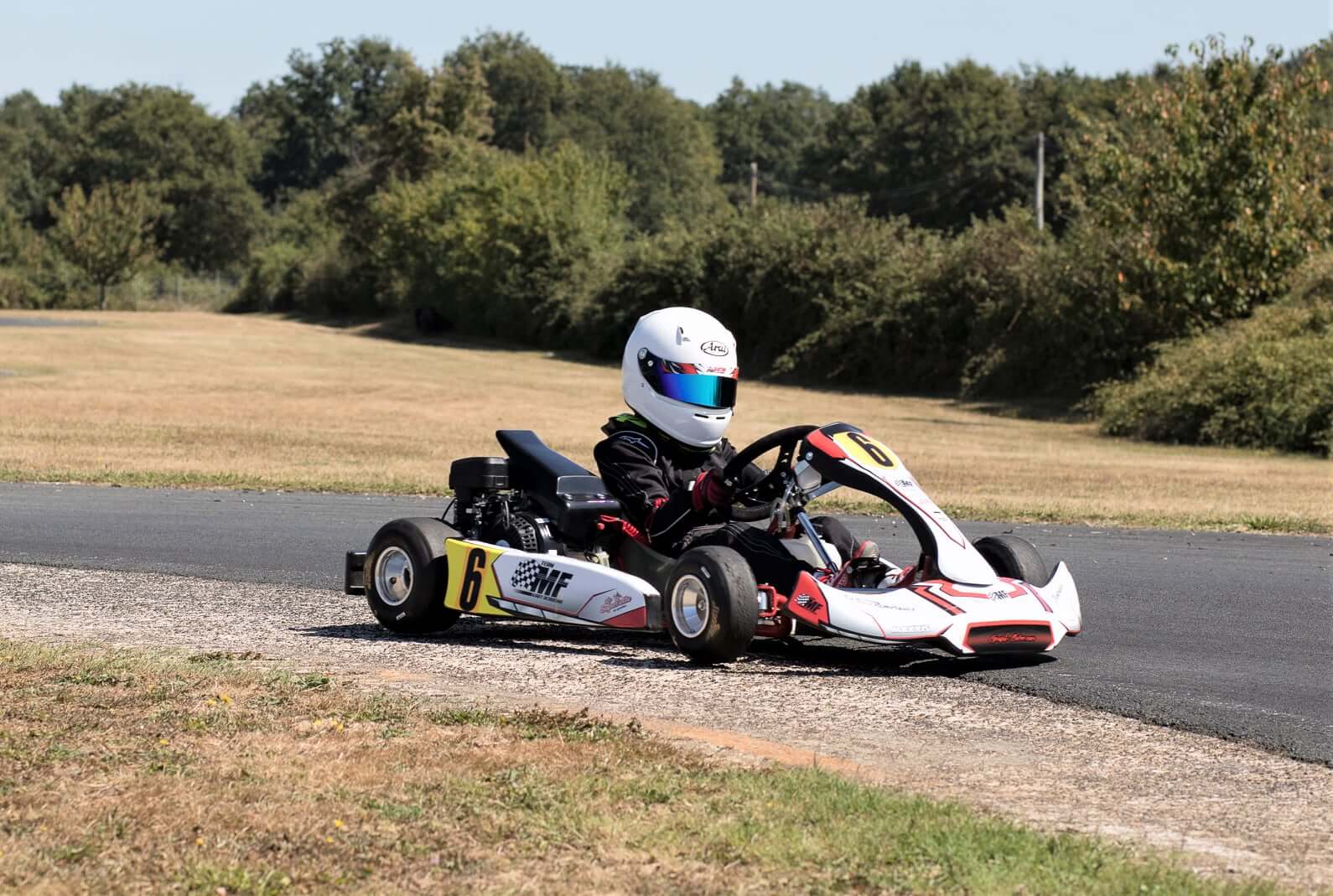
These 4-stroke engines are chosen for their low purchase and maintenance cost, as well as their proven reliability and safety. Maintenance is simplified (no oil mix, engines can run for many hours without major overhaul). While performance is not blistering, it is more than enough to have fun and learn driving skills 😎
UFOLEP really focuses on making karting accessible: “passion should not be a luxury” is one of their mottos. Race costs are kept low, technical regulations are very stable and easy to understand, and events take place in a relaxed, friendly atmosphere. UFOLEP championships are regional and national, but with a spirit of camaraderie: it is often a springboard for those who want to race without breaking the bank, or simply practice as a family.
ℹ️ Note that UFOLEP also allows 2-stroke karts in certain events, and it is possible to take part even if you already have an FFSA licence (the two are not incompatible). More information on the official Ufolep-Kart.com website
In summary, to start in competition, a young driver aged 6 to 12 will have the choice between the FFSA pathway (more performance-oriented, from 8 years old in Mini 60) and the UFOLEP pathway (more leisure/educational, from 6 years old in 4-stroke). Many start in UFOLEP for fun and budget reasons, then move to FFSA later if they want to step up their competition. The reverse is also true: some return to UFOLEP for less financially demanding karting while still racing. The important thing is that everyone can find a format suited to their age, skill level, and means 🙂
Examples of karts for young drivers: Baby-kart and Mini 60
Let’s end with two examples of typical karts for children starting out: the baby-kart for the very youngest and the Mini 60 for young competitors aged 8 to 12.
The baby-kart (from 5 years old)
The baby-kart is a small kart designed for initiation from age 5, in leisure or educational use (EFK). It is smaller than a Minime kart, with a very short chassis and simplified mechanics. A baby-kart is fitted with a 50 cc Honda GX50 4-stroke engine (about 2 hp) that starts easily with a pull starter, much like a lawnmower. This 50 cc engine, quiet and ultra-reliable, propels the kart at a modest speed (around 25 km/h top speed) suitable for a 5–6-year-old.
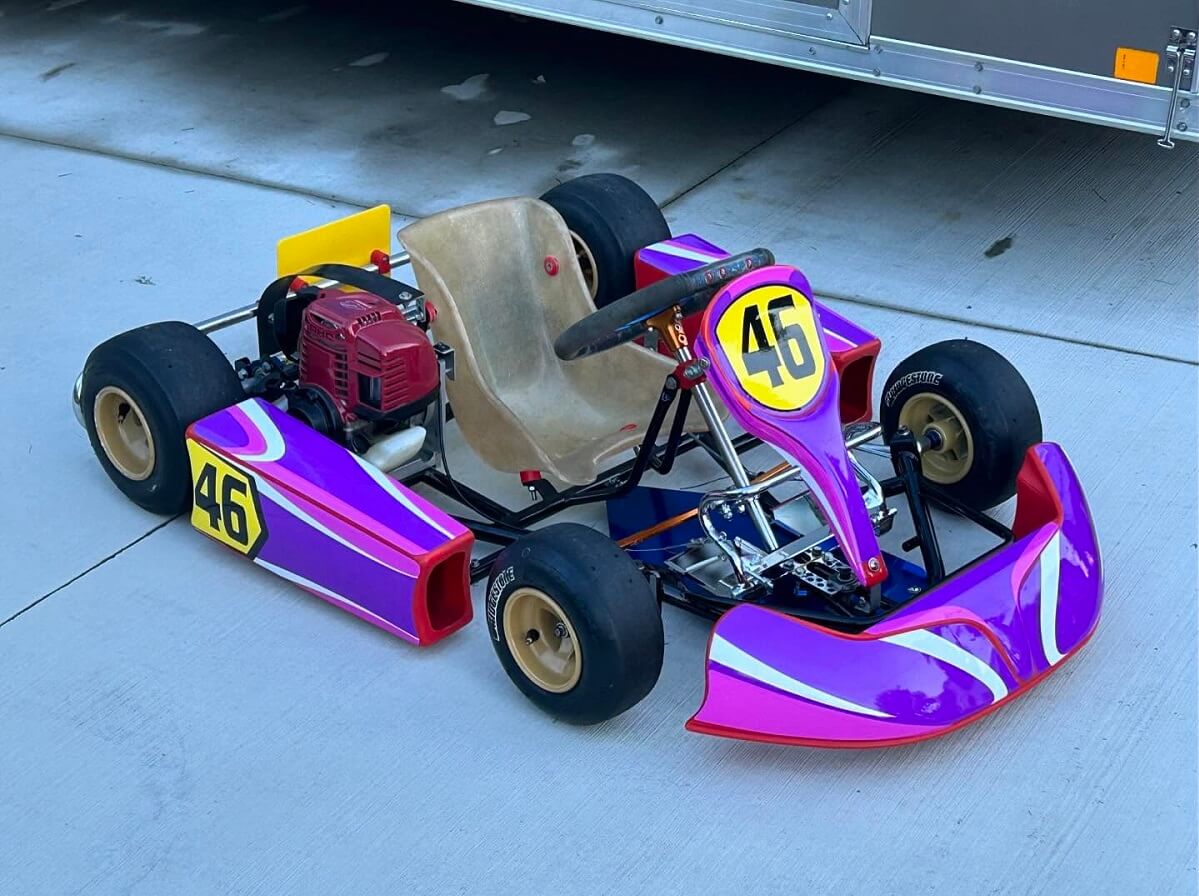
Braking is via a mechanical rear brake (cable-operated) requiring almost no maintenance. The chassis is fully adjustable to the young driver’s build: adjustable pedals and seat, closer steering wheel, so they can reach the controls properly. Weighing around 40 kg fully equipped, the baby-kart is very easy to drive, with light steering (only 25 mm axles). Visually, these karts often mimic the look of bigger models, which children love (colourful stickers, mini bodywork) 🤩
Budget-wise, a complete new baby-kart costs about €3,000. They are available from various manufacturers (Praga, Sodi, CRG, BirelArt…). As there is no official competition for this age (just supervised track sessions), a second-hand baby-kart is an interesting option: many families resell theirs once the child is ready to move up to the next category.
Note that in leisure rental, electric karts for ages 3–6 play a somewhat similar initiation role to a privately-owned baby-kart but look much more like toys than a true competition kart.
The Minikart (6–12 years old)
Between the baby-kart and the Mini 60, there is an essential intermediate step: the Minikart, mainly used in French Karting Schools (EFK) and for the first youth competitions. This category is designed to introduce children aged 6 to 12 to karting with standardized and safe equipment.
Historically, the Minikart was powered by a Honda GX 120, a 4-stroke engine of 118 cc producing around 4 horsepower. This simple and ultra-reliable engine is still used in some EFKs for learning and leisure training.
In recent years, for official competition, it has been replaced by the Rotax Micro Max 125, a 2-stroke engine of 125 cc with liquid cooling, limited to 6.8 horsepower at 6,500 rpm (maximum rpm 9,000). Derived from the FR125 Max Junior, this engine retains great reliability while offering performance closer to competitive karting, with a low weight and electric start.
Mounted on chassis with a wheelbase from 780 to 1050 mm, these Minikarts offer a more dynamic driving experience than the baby-kart while remaining accessible. They allow children to progress in a structured environment before moving on to higher categories such as the Mini 60. It is an excellent step for learning the basics of racing lines, braking, and race management.
The Mini 60 kart (8–12 years old)
The Mini 60 is the competition kart par excellence for children aged 8 to 12. It represents the first true federal category where young drivers compete in a championship. Technically, a Mini 60 kart is a small gem derived from professional karting, simply on a smaller scale 🤏
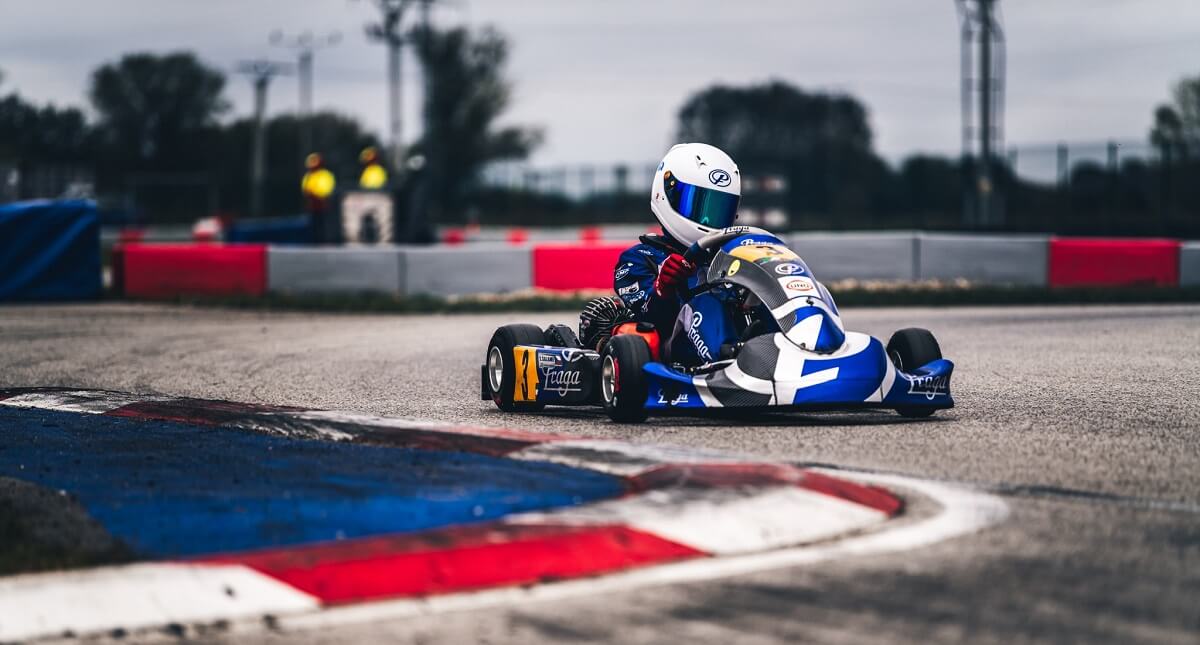
The chassis is a tubular steel frame (diameter ~28 mm) and must weigh, with the engine, around 60 kg without the driver. The mandatory engine in France is the Vortex Mini 60 cc 2-stroke air-cooled unit. Despite its tiny displacement, it produces 8.5 horsepower at nearly 14,000 rpm. It is equipped with an electric starter and a centrifugal clutch, meaning children do not need to push-start or handle a gearbox.
In terms of performance, a well-set-up Mini 60 can reach 90 km/h top speed on a large track, and accelerates strongly up to ~80 km/h thanks to its lightweight build. The tyres are medium compound slicks for durability over several races, and rain tyres are not used (races are neutralised if it rains too heavily). The 3-litre fuel tank allows for heats of around 15 km.
In competition, to reduce equipment disparities, the FFSA mandates random engine allocation during major Mini 60 championships: Vortex engines are rented to participants and randomly exchanged. This does not prevent teams from working on chassis setup, adjustments, and driving skills to stand out.
The Mini 60 is a highly competitive and formative category – this is often where future champions are spotted. Drivers learn overtaking, race strategy, while managing an already technical kart (rear hydraulic brake only, carburetion monitoring, important driving position).
The cost of a complete new Mini 60 kart is around €5,500. Brands such as Praga, Kart Republic, Birel, Sodi, Alpha Karting, and others offer homologated models. The Vortex Mini 60 engine rental costs a few hundred euros for a race weekend, and to buy it new costs around €2,200.
A season of Mini 60 competition, including training, travel, tyres, etc., can easily reach several thousand euros, even when optimising expenses. It is a significant investment for committed families, but many emphasise the formative role of the Mini 60: discipline, respect for rules, managing victory and defeat… all values learned at a very young age in this sport.
Conclusion
Karting is one of the rare mechanical sports disciplines where you can start from preschool age and continue until an advanced age. Whether in leisure rental from 3–4 years old or in structured competition from 6–8 years old, every child (or beginner adult) can find a suitable format to thrive behind the wheel 🥰
It is important to clearly distinguish leisure karting, accessible to all for a few minutes of fun on track, from competition karting, which requires greater commitment in time, learning, and budget. In France, the framework is well-structured with the French Karting Schools to introduce the youngest safely, then progressive categories under the FFSA, not forgetting the UFOLEP option for a more friendly and affordable practice from 6 years old.
Ultimately, it is possible to start karting from a very young age provided the steps are respected, by choosing the right format and equipment suited to your child. Each stage, whether it is an initiation in leisure karting or entry into competition, will allow them to grow in confidence while enjoying themselves on track.
Karting is above all an ideal school of life, where vehicle control, concentration, discipline, and respect for rules are naturally learned lap after lap.
If your child shows an interest in driving, why not take action by contacting the nearest circuit or French Karting School right now? This first experience could mark the beginning of a beautiful sporting adventure, full of emotions, learning, and shared family moments! 👍

